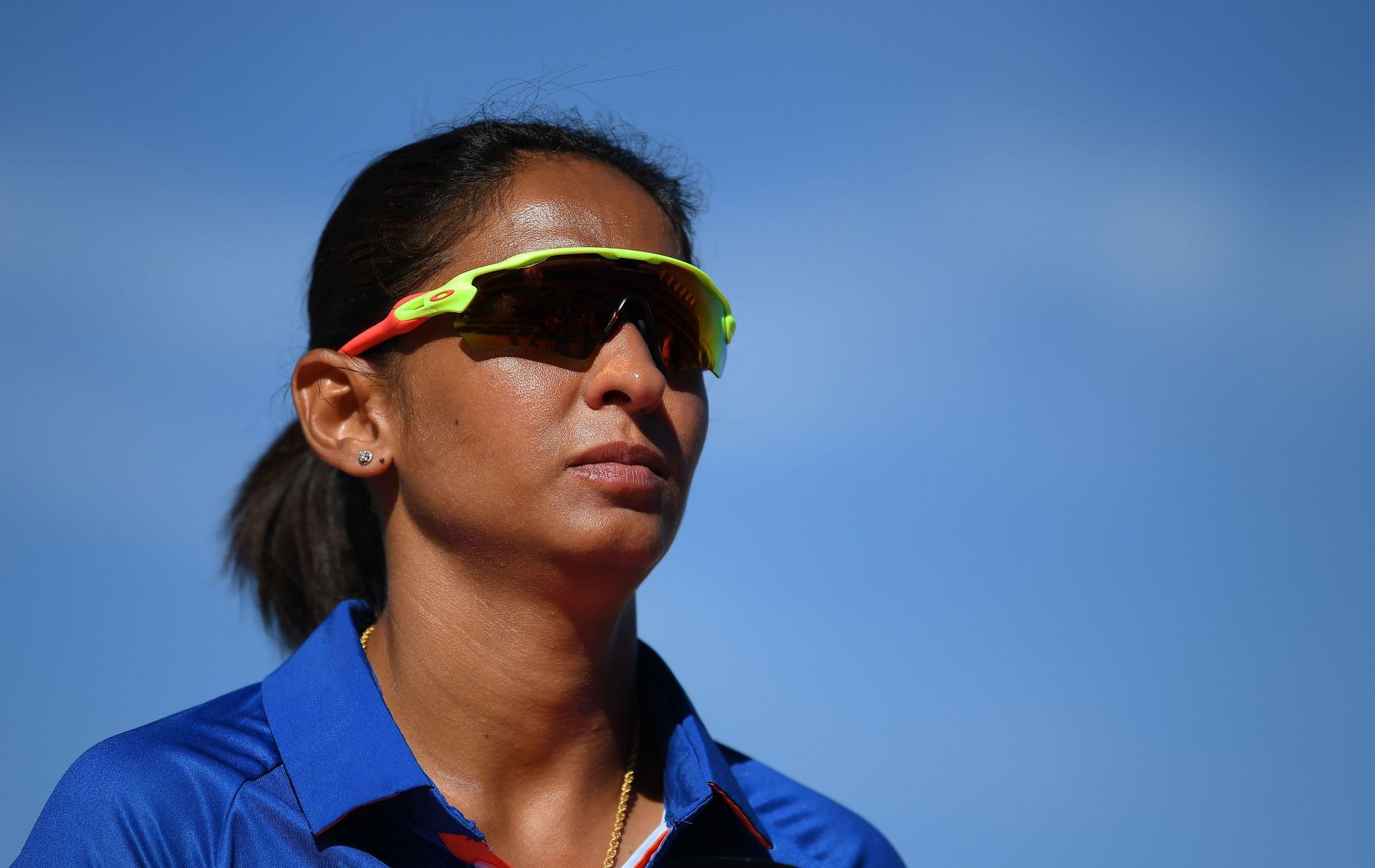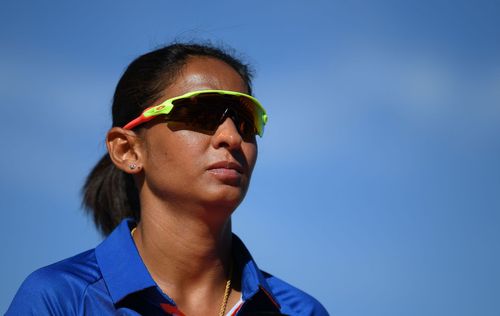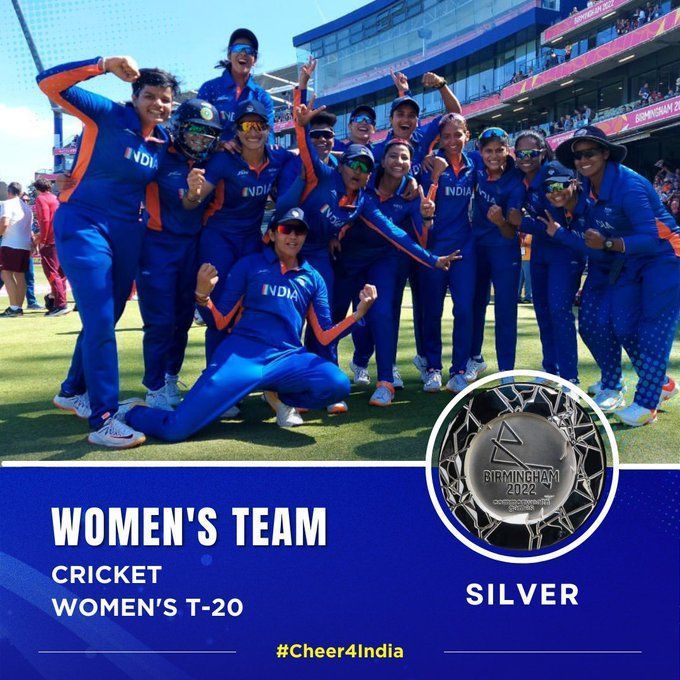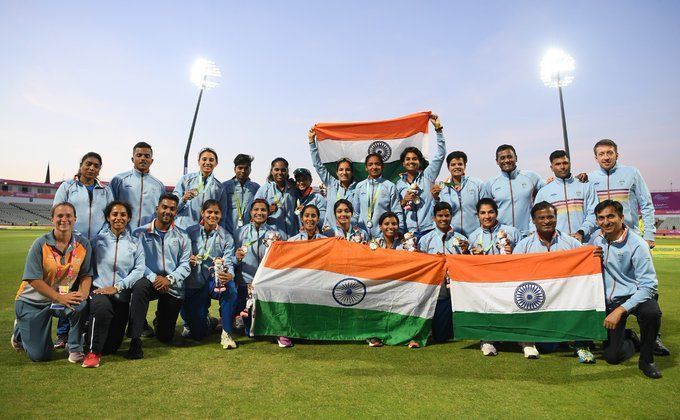
Patience and a WIPL will make the Indian women's cricket team world-beaters

The Indian women's cricket team. The Australian women’s cricket team. A multi-nation event. A high-pressure situation. And, of course, the hunger to etch themselves into sporting folklore. Whenever these phrases have been used in conjunction lately, the Aussies have usually emerged victorious.
It happened in front of a jam-packed MCG in 2020 at the 2020 Women’s T20 World Cup. India defeated Australia in the semi-final of the Women’s World Cup in 2017, although that seems a lifetime ago. And after a manic finale to the Commonwealth Games at Birmingham, it might seem that the Indian women's cricket team has plenty of distance to traverse before becoming a world-beating outfit.
There’s some truth to it too, considering there are a lot of rough edges that need to be smoothened out. However, the Indian women's cricket team, at the moment, are as primed as ever to become an outfit everyone fears. Not just because of what happened at the Commonwealth Games, but also because of the massive potential this particular side has.
The Indian women's cricket team ran Australia close
Before the summit clash against Australia, there was a school of thought that India just didn’t have enough firepower to compete. Firepower (or a lack of it) wasn’t where the final was decided, though. It came down to those crucial moments – moments where Australia held their own and India, despite doing so for a good chunk of the evening, just crumbled when it really mattered.
That was primarily because India lacked the requisite experience to tide over such situations – experience that they’ve not had because there isn’t really a domestic structure that compares to what Australia and England have in place.
Both countries have prioritised a franchise league that pits their nation’s finest against the best from around the globe. This then means that whenever they are pressed into pressure situations, they know how to find their way around it.
At the moment, the Indian women's cricket team depends heavily on Harmanpreet Kaur and Smriti Mandhana – two cricketers who are regular fixtures in various T20 leagues. Deepti Sharma, their bowling lynchpin, has also played plenty of franchise T20 cricket, whereas Shafali Verma is one of the more in-demand players on the planet. Jemimah Rodrigues, too, has featured more frequently in these competitions than for the national team in the recent past.
So, it doesn’t take rocket science to figure out that they stand a better chance to do well on the big stage. Not just because of their quality, but because they have been in those circumstances before and have come through relatively unscathed.
The WIPL, thus, could solve that quandary. India has enough talent to create such a cricketing ecosystem. All it needs is for it to actually happen and give these girls the perfect platform to harness their potential, thereby becoming crucial components in whatever the Indian women's cricket team do moving forward.
The other aspect the Indian women's cricket team will have to be careful about is the amount of patience they have with young cricketers. Of the eleven that started the final against Australia, only one was above 30 years of age (Harmanpreet). Only three were more than 25 years of age (Meghna Singh, Renuka Singh Thakur and Sneh Rana).
That, apart from illustrating how bright the future can be, is also a caveat for the team management. It’s a caveat because they need to ensure they are persisted with and are given a fair chance to crack the international code.
Even at the Commonwealth Games, it never felt India had a settled line-up. Yastika Bhatia began as the wicket-keeper before being replaced by Taniya Bhatia. S Meghana, who is a fearsome striker, was dropped after a solitary game, and the batting abilities of Pooja Vastrakar and Sneh weren’t utilized properly until the final.
It's easy to nit-pick after a game has reached its conclusion. Hindsight is probably the best coach this sport has ever seen. But considering how India lost their way against Australia in the final five overs, you start to wonder if they had the right amount of clarity to grab the game by the scruff of its neck.
While Harmanpreet and Jemimah Rodrigues were at the crease, it felt everything was under control. As soon as the pair departed, there were nervous singles, poor bits of awareness and a general lack of understanding of what was needed.
It led many on social media to call the Indian women's cricket team names, and suggest that they just didn’t have enough wherewithal to overcome clutch clashes. Because this team is so young, and has gotten so far without a proper equivalent to the Women’s Big Bash and the Women’s Hundred, such conclusions seem hurried.
They have it in them. It’s just that they now need a better ecosystem to realise what their true potential is. A silver medal at the Commonwealth Games, especially after running Australia close twice, is not a failure at all, despite what some keyboard warriors might imply. Yes, the Indian women's cricket team got into winning positions and then fluffed their lines. But everyone makes mistakes, right?
The more lasting image from the final, though, was the way Harmanpreet conducted herself during the presentation ceremony. Almost everyone around her was jubilant and was waving to the crowd, celebrating their achievement. They should’ve been chuffed at what they had accomplished too. Harmanpreet, however, had a pensive look to her.
It was almost as if she felt there was unfinished business from an Indian perspective – business that India will want to get done with when the Women’s T20 World Cup caravan comes along next year.
By then, they would hope that this current crop of players have played enough games, both domestically and internationally at a very high level, and would’ve understood what works in high-pressure situations and what doesn’t.
If that happens, the narrative of Australia always defeating the Indian women's cricket team in crucial matches could change. They were schooled by the defending T20 world champions in the final and you could argue that India got on-the-job training in how to handle their nerves.
But the fact that the Indian women's cricket team got to a stage where Australia were worried and had to rely on Indian mistakes, tells you everything you should know about this Indian women's cricket team. It might not have yielded the desired effect on Sunday but it might not be very far away either.

